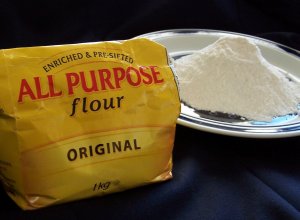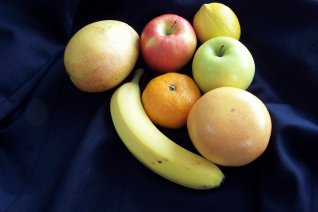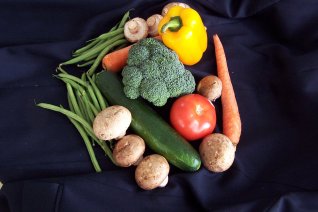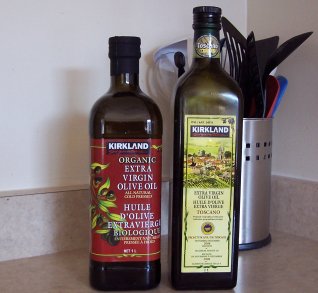|
Healthy Eating GuidelinesHealthy eating guidelines you find here are helpful in creating better health - but remember they're only part of the picture. Each of the 9 other “Ways to Protect Your Major Asset” are also very important. There’s a little ditty frequently cited by a lot of computer scientists and users: • GIGO • Garbage In Garbage Out While that’s true of computers it’s also true of our bodies, except that the Garbage Out part refers to the garbage that after processing by our digestive system goes to our cells. If you’re sleepy after eating it’s likely that you are practising "Garbage In", or you are simply consuming too much food. In fact, "Garbage In" can play havoc with our digestive systems. If you don’t eat food high in live enzymes you can have problems digesting food effectively. Do you think Garbage In should be part of healthy eating guidelines? Of course not. The three types of digestive enzymes work to break down the food we eat. Amylase enzymes are found in saliva, pancreatic and intestinal juices. In their different forms these amylase enzymes break down the various carbohydrates. Nutr Heal,47 Protease enzymes break down proteins and are found in the stomach, pancreatic and intestinal juices. Lipase enzymes are found in food fats and act in stomach and pancreatic juices to break down fats. Nutr Heal,47 Heat (at or above 118F/48C) destroys enzymes – so essentially all cooking and most food processing effectively removes enzymes. Raw foods are the major source of enzymes and you should include these in your diet as part of effective healthy eating guidelines. The top source is sprouts and you can easily grow these in a window in your home. In fact many sailors grow them in their cabins on the open ocean. If they can do it while sailing across the world’s oceans thousands of miles from land then you can do it in the comfort of your home. “Avocados, papayas, pineapples, bananas, and mangos are all high in enzymes.” Nutr Heal,47-48 The antioxidant enzyme superoxide dimutase can be found in many green vegetables including broccoli, Brussel sprouts, barley grass, wheatgrass, and cabbage. Nutr Heal,48 These should be part of all healthy eating plans so that you don't get sleepy after eating. A Good Source of Enzymes An excellent product containing digestive and metabolic enzymes in the form of a shake drink is available in chocolate and vanilla flavours. I can guarantee it won't make you sleepy after eating, and it can form part of any plan of eating to build muscle. It contains the three digestive enzymes amylase, protease and lipase as well as the metabolic enzyme Cellulase, which breaks down the bond between two or more carbohydrates, or between a carbohydrate and a non-carbohydrate molecule.
I personally find that these drinks, based on whey protein and infused with these live enzymes are very easily digested, replace a meal and taste great when mixed in a blender with two ice cubes. At this site go to "Products" then "Cleanse" then pick either chocolate or vanilla or blend both to your taste (opens new window).
Glycemic Index and Glycemic LoadingA very important part of healthy eating guidelines is to understand the Glycemic Index for foods and to use it in managing your Glycemic Load at any meal or snack. Foods too high on the Glycemic Index spike your insulin. Doing this over and over and over can lead to Type 2 Diabetes. To learn more about Glycemic Load, Insulin and the role of the pancreas follow this.
This is really important so please follow it here (opens new window).
It’s What You Do Daily That Counts
(Sorry I just couldn't resist it any longer.) Anyway those desserts don't form part any healthy eating guidelines and they and they certainly are not eating to build muscle. So if you do eat desserts regularly over a long period of time you are potentially setting yourself up for Type 2 Diabetes and all its deadly consequences. Remember you need to have a balanced Glycemic Load. So let’s look at a couple of sets of healthy eating guidelines.
Alternatively, a Good Food Pyramid that's one of the very best set of healthy eating guidelines would look something like the following: At the Top • In very small amounts sweets, snack foods, red meat and butter • Each of these should only be consumed sparingly on a regular basis and that means very little. • If you have been consuming high glycemic snacks you will know that get energy highs shortly after you consume them as your body deals with the sugar – then about ½ hour later you get a sugar low – low energy – so you eat another high glycemic snack to “get your energy up” - this sometimes referred to as the sleepy after eating effect • Guess what – that leads to excess fat and type 2 Diabetes One Level Down • In moderation (40-50 grams/day – about 2 decks of cards in size) poultry, fish or eggs. • In moderation yogurt (1/2 cup) or cheese (1/2 deck of cards) Next Level Down • In relative abundance – plant oils – especially extra virgin olive oil, a rich source of polyphenols and anti-oxidants • Extra virgin olive oil is much, much better for you than butter – so use it whenever possible in place of butter – e.g. on your bread • Always get olive oil only in a dark bottle. Exposure to light destroys many of its beneficial properties. At the Midpoint • In relative abundance nuts and beans, lentils. • There are many varieties of fresh beans – don’t just grab a can of pork and beans – that’s not what I’m referring to – but if you want to make your own go for it • Lentil soup can be made in advance and then warmed – a delicious snack or meal In Significant Abundance
• The Fit for Life way of eating is to consume only fruits up until lunch time. Fruits digest relatively well if you don’t mix them with other foods.
The Base of the Pyramid • Whole Grain Foods • You saw in the page on the Food Supply how much of the nutrition is lost in the milling or processing of grains • You want those nutrients A Note on Water • Drink 8-10 glasses of pure water each day – 8 glasses is 2.2 litres or just over ½ U.S. Gallon/day • The purest form of water is distilled • Reverse osmosis is also very good • Tap water may be rated “safe” to drink but it typically contains various impurities depending on the watershed, the pipes that bring it to your home and the pipes in your home, not to mention chlorine and fluoride that are often added to municipal water. • Eating to build muscle is covered in another page A Note on Olive Oil
• Nov 1, 2004 FDA “concluded that there is limited non-conclusive evidence that the replacement of 2 tbsp (23g) of saturated fat with a similar amount of OLIVE OIL may reduce the risk of coronary heart disease in a daily diet unchanged in caloric intake”. Medscape 2004:Nov 15 • This is an important finding even though hedged in inconclusive language – Mediterraneans have known this for centuries and their high use of olive oil is one of the reasons cited for their significantly lower levels of cardiovascular and heart disease. • Note the colour of the bottles - a dark coloured bottle with a good seal are essential to preserve the olive oil. Light can oxidize it and diminish the polyphenols and other essential ingredients. Exposure to air – e.g. sitting in an open tin- can also damage the product. • Buy only Extra Virgin Olive Oil – it comes from the first pressing and has much higher levels of the essential ingredients. • Incorporate Extra Virgin Oil in your healthy eating guidelines and get rid of the unhealthy fats A Note on Fats • Avoid trans fatty acids and trans fats – typically they are hard at room temperature – e.g. lard, shortening, butter – hydrogenated oils are another type of very unhealthy fat • Saturated fats (meats, milk, cheese) must be > 10% of daily intake of calories • Monounsaturated fats don’t promote fatty deposits in arteries – olive oil and canola oil are two good examples. Nuts, seeds, avocados and olives are others • Polyunsaturated fats are also healthy – nuts, seeds and oils made from sunflower, canola, and soybean • Omega 3 fats are a type of polyunsaturated fat found in the fattier fishes such as salmon and trout • Your body does need fats – just be sure to choose the right kinds. Make thess good fats part of your personal healthy eating guidelines and discard other fats from your healthy eating plans. • Your total fat intake per day should be about 50-75 grams
That's quite a bit on healthy eating guidelines. You will find lots more information, including full citations and summaries of studies from medical journals in my book It’s About Health. But you can also continue to surf the 200 free pages of this website for lots of valuable, evidence-based information.
It’s About Health
|
 Having a big piece of sugar-filled chocolate cake made with white flower (basically all the nutrients have been removed), or Boston cream pie, or even French sugar pie once a month is not a big deal – don’t beat yourself up about it. It is, however, probably going to make you sleepy after eating. Is it better to be Sleepy After Eating or Sleepless in Seattle like Tom Hanks?
Having a big piece of sugar-filled chocolate cake made with white flower (basically all the nutrients have been removed), or Boston cream pie, or even French sugar pie once a month is not a big deal – don’t beat yourself up about it. It is, however, probably going to make you sleepy after eating. Is it better to be Sleepy After Eating or Sleepless in Seattle like Tom Hanks? Fit for Life is one diet that I would recommend as a good pattern to follow daily and it is one of the very best healthy eating plans. It has kept me fit and healthy from age 50 to my current 67 years of age. You can find the original book and subsequent versions on the internet, often at very good prices. It relies on fruits, vegetables and proteins with appropriate carbohydrates.
Fit for Life is one diet that I would recommend as a good pattern to follow daily and it is one of the very best healthy eating plans. It has kept me fit and healthy from age 50 to my current 67 years of age. You can find the original book and subsequent versions on the internet, often at very good prices. It relies on fruits, vegetables and proteins with appropriate carbohydrates. • Fresh Fruits – 4-5 servings per day – the fresher they are the better – the longer they have ripened on the tree or vine the better because they take up more nutrients – go to a Farmers’ Market whenever possible – if you can buy organic even better, way better - these will not make you sleepy after eating and should be part of any healthy eating guidelines
• Fresh Fruits – 4-5 servings per day – the fresher they are the better – the longer they have ripened on the tree or vine the better because they take up more nutrients – go to a Farmers’ Market whenever possible – if you can buy organic even better, way better - these will not make you sleepy after eating and should be part of any healthy eating guidelines • Vegetables – 3- 4 servings/day and mix up the colours. This will give you a wider variety of nutrients and good sources of enzymes to aid in digestion. There are just a few types of veggies in the picture. You'll find a much wider choice at the market. So go check them out. Go for variety. Experiment. Go for the gusto!
• Vegetables – 3- 4 servings/day and mix up the colours. This will give you a wider variety of nutrients and good sources of enzymes to aid in digestion. There are just a few types of veggies in the picture. You'll find a much wider choice at the market. So go check them out. Go for variety. Experiment. Go for the gusto! • The US Food and Drug Administration (FDA) is notoriously reluctant to allow claims about food or supplements
• The US Food and Drug Administration (FDA) is notoriously reluctant to allow claims about food or supplements